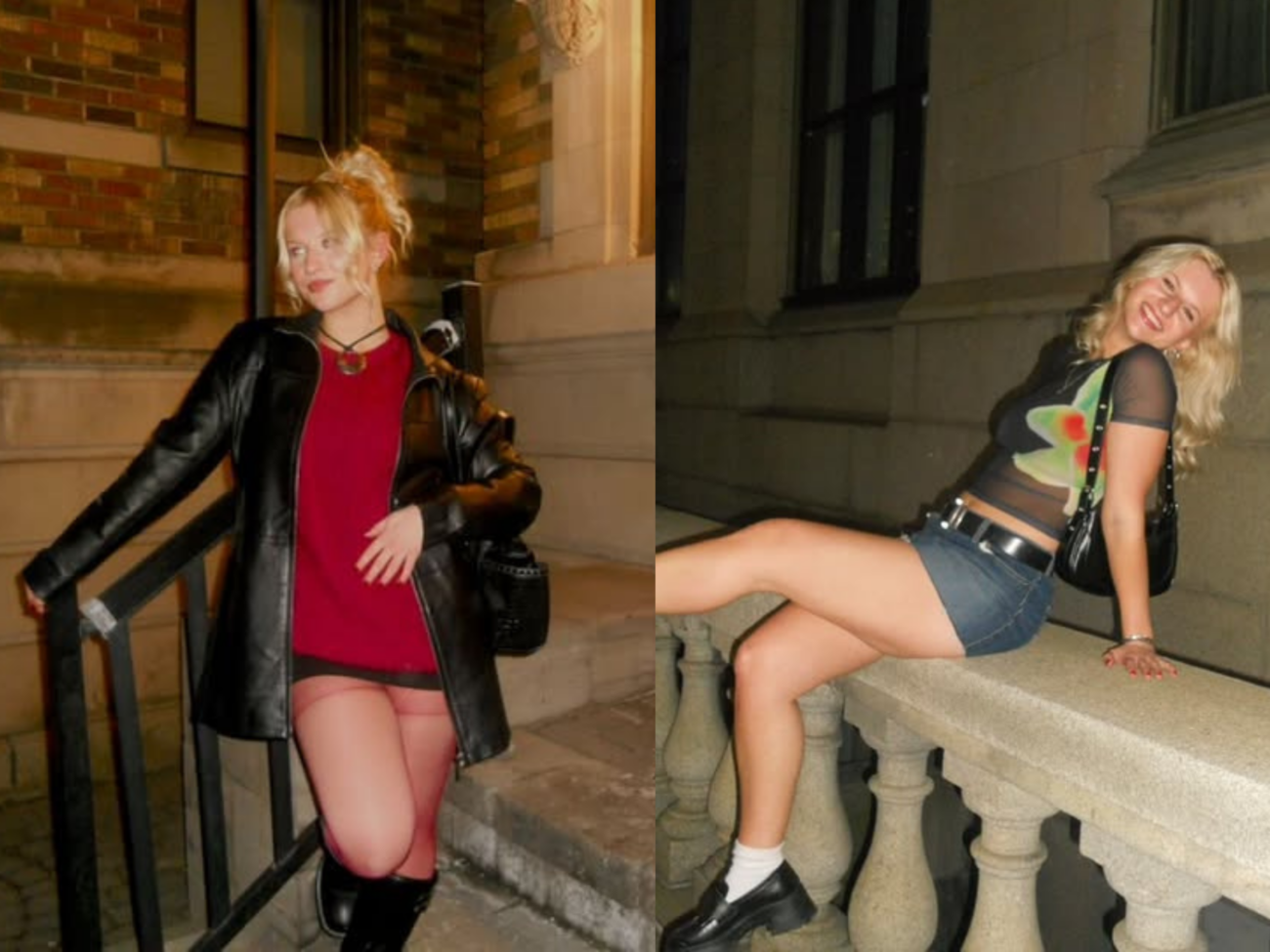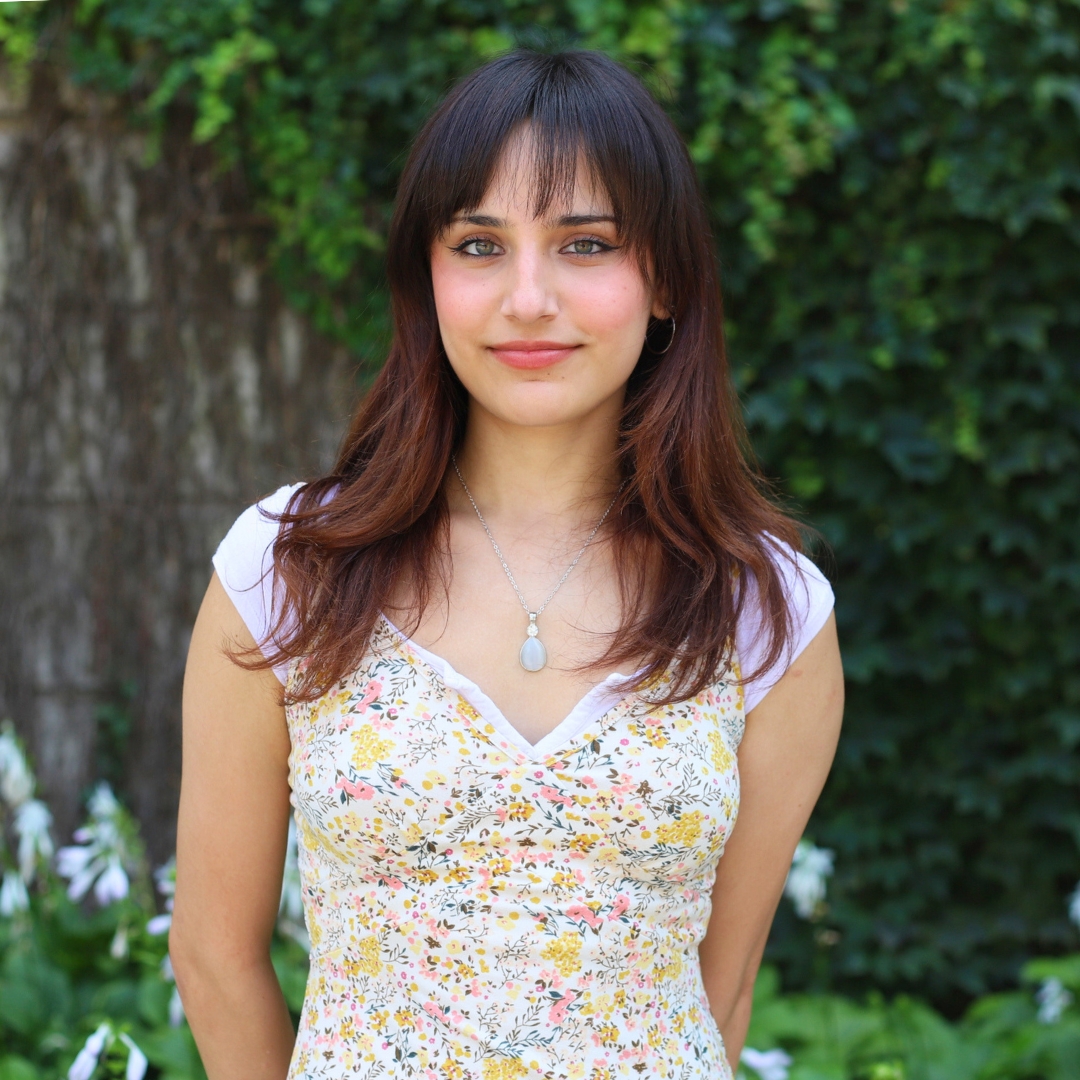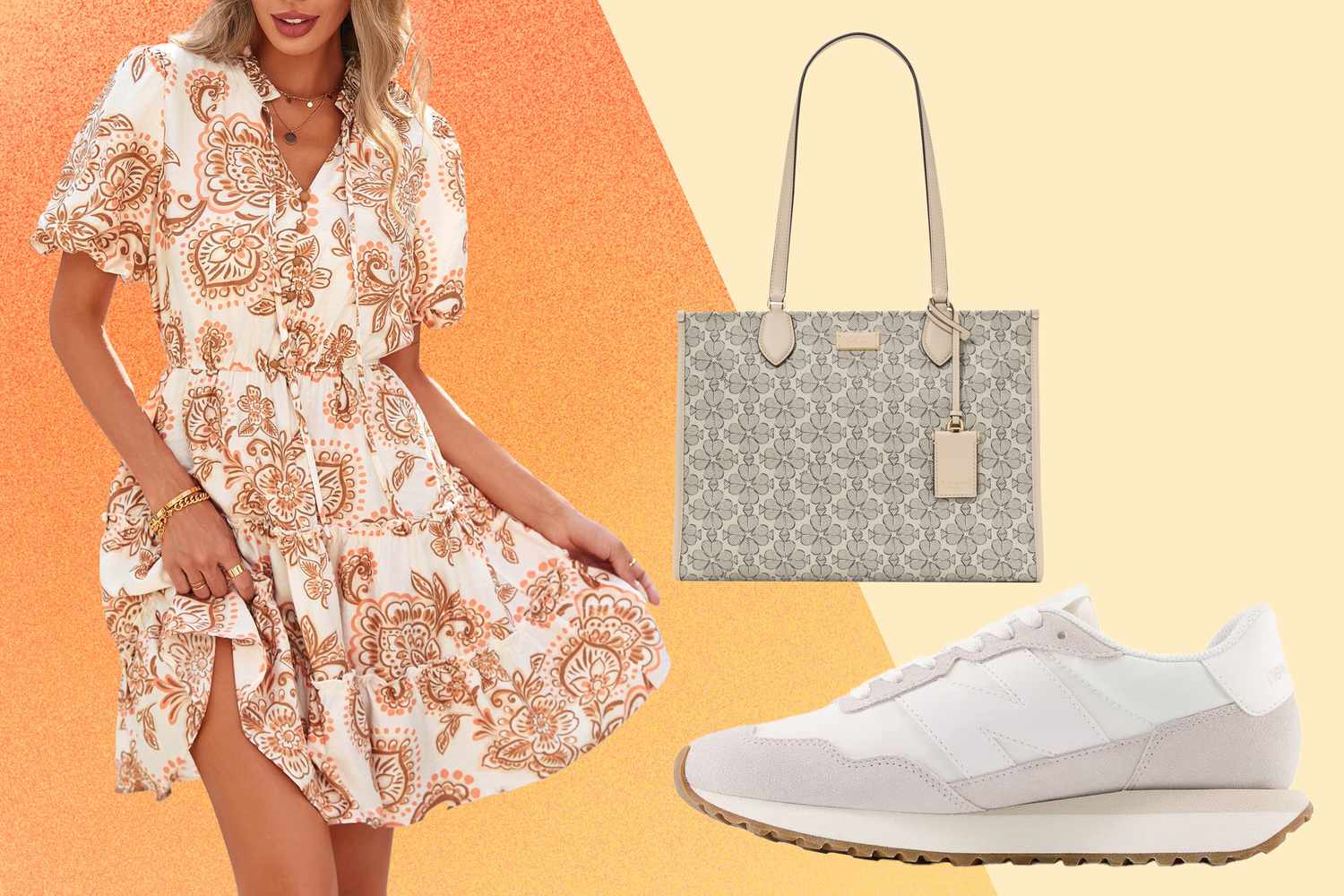STUDENTS STITCH, THRIFT, AND STYLE THEIR WAY TO SELF-EXPRESSION
At the University of Ottawa, style isn’t just what students wear—it’s what they create. From crocheted dusters and reworked trench coats to inspiration pulled from tree bark or aunties in vintage photos, students are redefining what it means to get dressed. Here’s how five fashion-forward U of O students are expressing themselves through DIY style, thrifting, and a deep love for the creative process.
Dhanya Davies, sociology major.
The Fulcrum (TF): Describe your style!
Dhanya Davies (DD): My style is inspired by silhouettes from the ’60s, ’70s, and ’90s. I love to create looks with interesting textures and statement pieces, especially funky jewellery!
TF: Where do you find style inspiration?
DD: My parents and sisters are my biggest style inspirations. I’d like to think that social media inspired me to try things I otherwise never would have. Still, after years of experimentation – in high school especially, I developed a concrete personal style.
TF: How has thrifting influenced your style?
DD: Yes! I think thrifting is a great way to test what your tastes are outside of the curated atmosphere of standard retail stores. I think thrifting helped me develop my style the most overall. I like to go with friends and stay for a while, thrifting is a time investment! When you don’t go with friends you can end up leaving with random pieces that were bought to justify the hours you just spent sifting through the racks. I tend to favour vintage stores and markets because (most of the time) it is curated recycled clothing which is the best of both worlds. My favourites in Ottawa are Ragtime Vintage and Goody Mart!
TF: What’s a project you’re especially proud of?
DD: My favourite project I’ve made is a custom coat I made a few years back for my sister, coincidentally it was my first project. I thrifted a black trench and sewed on chains, pendants, and more. It was not an everyday coat but it opened me up to the creativity of tailoring and sewing. Ever since that, I’ve taken to learning how to sew and tailor garments. It is a goal of mine to make something from scratch one day.TF: What role does fashion play in your identity?
DD: Fashion and personal style are heavily intertwined with my identity. Every day, I pick an outfit based on my mood. More broadly, fashion is important to me because it has the power to show who you are, and your beliefs, your likes and dislikes, probably even music taste, before you talk to someone. Think about subcultures and how each has their respective uniform, in a way the fashion can act as a filter for people who don’t share the same interests. But, I also think that grounding your personality in material pursuits like fashion and clothing is a slippery slope to over-consumption and an ultimate loss of authentic identity.
Sharon Mwepu, third year student in political science and public administration.
(TF): How would you describe your personal style?
Sharon Mwepu (SM): My style is Afro-chic meets city baddie with a sprinkle of “don’t try me.” I like mixing traditional African pieces with modern trends
TF: Where do you get your inspiration?
SM: Everywhere, honestly. Pinterest and Instagram keep me scrolling, but sometimes it’s a random girl on campus or a movie from the 2000s that sparks something. I also look back at old photos of Congolese aunties from the 80s and 90s – they were serving without even knowing it.
TF:Do you thrift your clothes? If so, how do you go about thrifting and which stores are your favourite?
SM: Oui Oui Oui but plot twist: my favorite thrift store is my mom’s closet. That woman has gems. I’ll walk in like “I’m just browsing,” and walk out with vintage blouses, silky scarves. It’s giving luxury, heritage, and zero dollars spent.
TF:Do you customize your clothes?
SM: I don’t sew like a pro, but I definitely play stylist. I’ll add pagne to a boring dress, cut, knot, accessorize whatever it takes to make it mine.
TF: How important is sustainability when it comes to the way you shop for or create clothes?
SM: I’m not perfect, but I try. I thrift, I repurpose, and I avoid overconsumption. For me, fashion has to be intentional culturally and ethically. If I can slay and still protect the planet? Say less.
TF:Why does fashion matter to you?
SM: Fashion is my armour. On days when I’m tired or anxious, a fire outfit reminds me who I am, a Congolese queen, a creative mind, a leader. My style lets me express softness and power at the same time. It’s not just about looking good, it’s about feeling like I own the room.

Katie Aunger, a student in art history with an anthropology minor.
TF: How would you describe your personal style?
Katie Aunger (KA): I’d describe my personal style as eclectic vintage-y, I feel like my style changes a lot just based on my mood.
TF: Where do you find your style inspiration?
KA: I loveee Pinterest and Tik Tok, so many creative ideas out there, however, being an art history major just looking at old runway photos and magazines truly gives me the most inspiration.
TF: Do you thrift your clothes? If so, how do you go about thrifting and which stores are your favourite?
KA: My mom would say I live at the thrift stores, which is a good point as I try to go at least once a week. My favorite thrift stores are Goodwill, however, there are ones back in my hometown and none in Ottawa. I tend to stick to Value Villages here. I’ve found some amazing pieces here at our university’s “Free Store!”
TF: Do you sew, crochet, or customize your own clothes? What got you into that?
KA: Being 5’2 means getting really good at hemming and tailoring clothes, especially since I’ve gotten more into thrifting. I’ve had to get creative on how I can make a piece work for me even if it’s not perfectly fitting. A lot of safety pins is my suggestion to those wanting to start upcycling without actually sewing!
Georgia Dales, a psychology student with an English minor.
TF: Why did you start making clothes?
Georgia Dales (GD): I wanted to make pieces that suited my body in the sense that I could release myself from the constraints of labelling inches to sizes. It becomes more organic and less judgemental and more supportive and whole.
TF: Where do you find your materials?
GD: I find collections of textiles at thrift stores and use it as a means to challenge myself into finding what can work within the limitations of the fabric availability.
TF: What crafts do you practice?
GD: I sew most often to vend, crochet to gift, and knit for myself. All are tedious and a labour of love which I adore gifting to others, myself along them.
TF: What’s your favorite project?
GD: My favorite piece I have made was a crochet duster. The object is made from yarn that was gifted to me by my aunt and I worked on it with my family. To an extent it is lovely to be able to tie a work together to a moment, and that period of my life is one which I’m grateful to be reminded of.
TF: How has making clothes changed your perspective?
GD: Making clothing has changed my perspective greatly about the support which we give to arts in predominantly women’s fields. Looking at trades which were women dominated were that of mostly textiles, many of whom are seen as a hobby and not an art. It would be very difficult to find an exhibition on mending no matter how skillful the practice truly is when completed with care. Clothing has taught me love for other women, for myself and the care I get to adorn myself with everyday, and fill me with gratitude for generations of women who dedicated themselves to this craft with little to no recognition. I get to choose to sew or knit and treat it as art instead of a necessity.
Related



